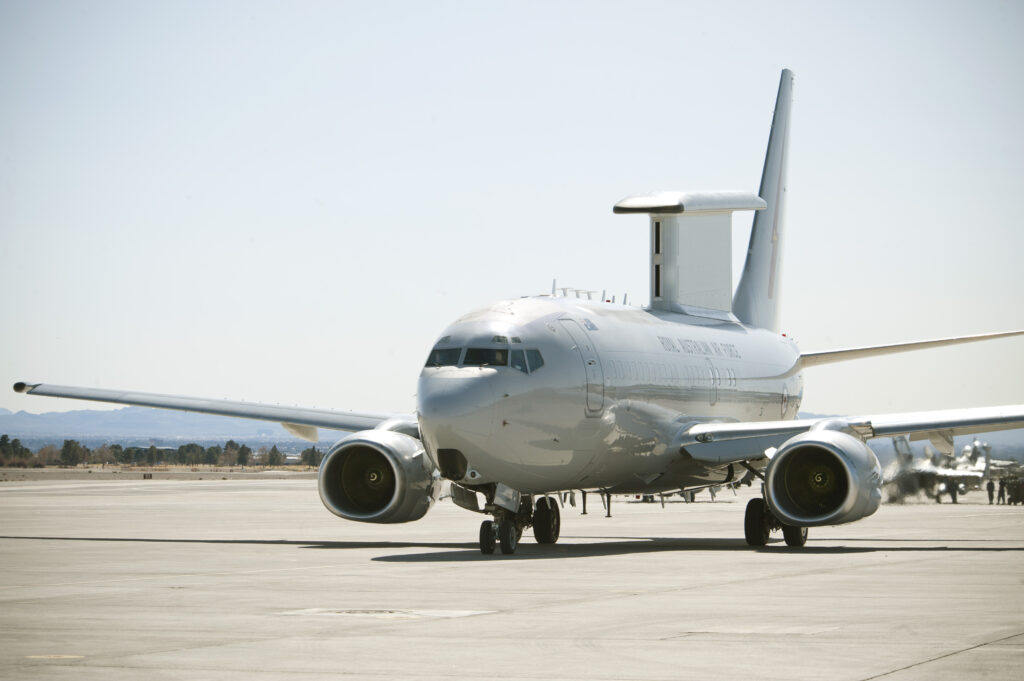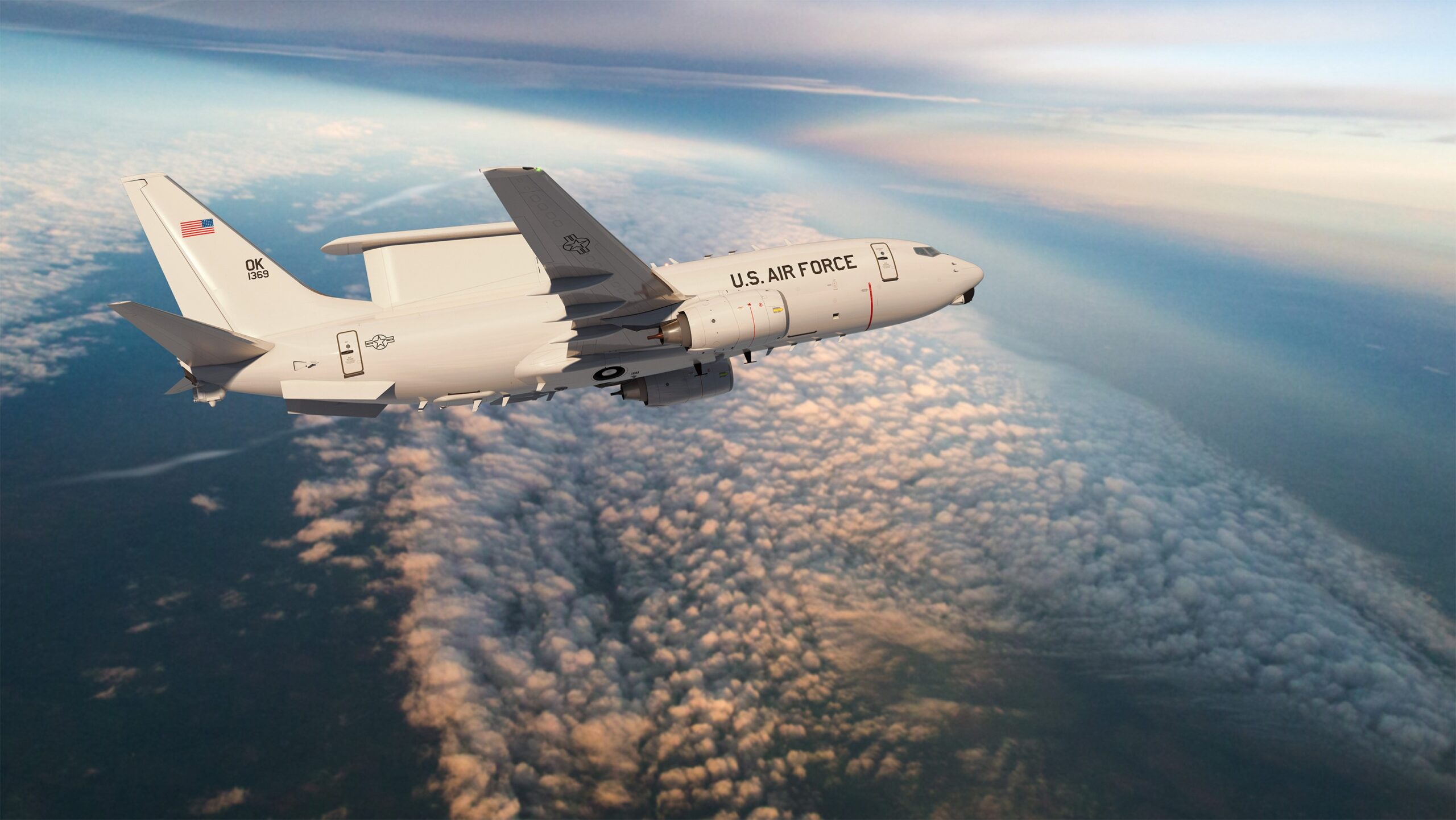The United States Air Force has issued a $1.2 Billion Undefinitized Contract to Boeing to develop two variants of their E-7 Airborne Early Warning & Control (AEW&C) aircraft.
E-7 History
The E-7’s first customer was the Royal Australian Air Force (RAAF), designated “E-7A Wedgetail”. The type entered Initial Operating Capability in November 2012.
However, it would be 16 months until the E-7 would first see an operational sortie. On March 1 2014, the aircraft took airborne command and control of maritime patrol aircraft searching for the wreckage of MH370 off the coast of Western Australia.

A Royal Australian Air Force E-7A (U.S. Air Force photo by Lawrence Crespo)
Six months later, the aircraft conducted it’s first combat sortie over Iraq supporting coalition forces in the Islamic State of Iraq and the Levant. Finally, the aircraft gained final operational capability in May 2015.
Alongside the Royal Australian Air Force, the aircraft is also operated by the Turkish Air Force. The primary differences between the two nation’s E-7 fleet is Australia’s primary subcontractors were Northrop and BAE Systems Australia.

The Turkish aircraft was supported by Turkish Aerospace Industries and HAVELSAN as its primary subcontractors. Within the Turkish Air Force, the aircraft is designated as “E-7T Peace Eagle”.
The Republic of Korea Air Force (ROKAF) also has a fleet of E-7 aircraft. Like the Turkish fleet, the Korean fleet used local subcontractors – in this case Korea Airspace Industries. The aircraft was pitched against a Gulfstream G550 option presented bit IAI Elta. The E-7 is designated as Peace Eye inside of ROKAF.
The next operational user for Wedgetail will be the UK’s Royal Air Force (RAF). The aircraft will be known as “Wedgetail AEW1” when operational.
The first aircraft are currently being modified by STS System at their Birmingham facility. They will be replacing the Boeing E-3 aircraft previously operated by the RAF.
US Usage
The E-7 has been pitched for a long time as a potential to the E-3 Sentry fleet currently operated by the US Air Force (USAF).

USAF Boeing E-3C (Photo: Thomas Saunders/AviationSource)
“The E-7 is a proven platform,” said Stu Voboril, E-7 program vice president and general manager. “It is the only advanced aircraft that is capable of meeting the U.S. Air Force’s near-term Airborne Early Warning & Control requirement while enabling integration across the joint force.”
The advantage of E-7 being pitched to USAF with the advantage of having an already active supply chain, not only from a military standpoint, but also due to the success of the Boeing 737 NG platform in the civilian world.
Soucre: aviationsourcenews.com








